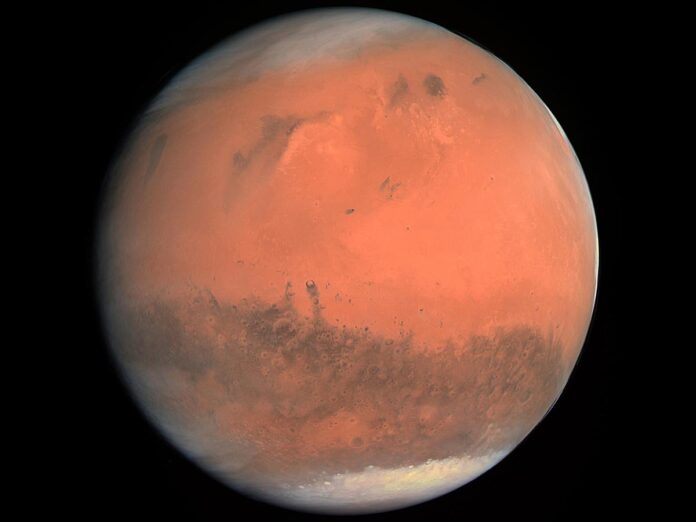Compared to Earth, Mars is a geologically dead planet. It doesn’t possess a liquid iron core generating a magnetic field as Earth does, and there are no plate tectonics at play – unlike Earth, the Red Planet’s crust has not been folded into the planet’s exterior and extruded again in a continuous folding process over billions of years.And scientists long thought the Martian crust, the outermost layer of the planet, was a simple affair, and certainly not as varied as Earth’s crust is. But new research published on Friday in the journal Geophysical Research Letters uses evidence from meteorite strikes to suggest that the subsurface of Mars is not as simple as it might seem, or was expected.The surface of Mars is basaltic rock, that is, material laid down as molten lava. But the researchers found higher concentrations of silicon in material excavated from miles beneath the surface by meteorite strikes, and silicon should not be present in such quantities in basaltic rock, according to University of Iowa assistant professor of Earth and Environmental Sciences and corresponding author of the study, Valerie Payre.’There is more silica in the composition that makes the rocks not basalt, but what we call more evolved in composition,’ Dr Payre said in a statement. ‘That tells us how the crust formed on Mars is definitely more complex than what we knew. So, it’s more about understanding that process, and especially what it means for how Earth’s crust first formed.’Using images from Nasa’s Mars Reconnaissance Orbiter, Dr Payre and her colleagues found high silicon concentrations at nine locations – impact craters and other cracks or fractures in the surface – in the Martian southern hemisphere.Scientists identified nine locations on Mars with higher concentrations of silicon than expected, hinting at a more complex past for the planet’s crust than once thoughScientists believe Mars formed 4.5 billion years ago, possibly as part of a collision between massive rocky bodies in space. Such a collision could have rendered the entire planet a gooing, liquid magma mess, a ‘magma ocean,’ over which a thin crust eventually congealed.If portions of the primordial Mars remained solid after such a collision however, remaining as islands within the magma ocean, that could explain the areas where the crust is more silicon than basaltic. The researchers dated the crust at the nine locations at 4.2 billion years old, the oldest crust identified on Mars so far.’There have been rovers on the surface that have observed rocks that were more silicic than basaltic,’ Dr Payre said. ‘So, there were ideas that the crust could be more silicic. But we never knew, and we still don’t know, how the early crust was formed, or how old it is, so it’s kind of a mystery still.’Studying the crust of Mars can help scientists better understand how Earth formed in its ancient past. Since our planet is geologically active, much of the most ancient crust has been recycled by plunging back into the planet’s interior at subduction zones where tectonic plates meet.’We don’t know our planet’s crust from the beginning; we don’t even know when life first appeared,’ Dr Payre said. ‘Many think the two could be related. So, understanding what the crust was like a long time ago could help us understand the whole evolution of our planet.’
The surface and crust of Mars may be more complex than scientists once thought
Sourceindependent.co.uk
RELATED ARTICLES


